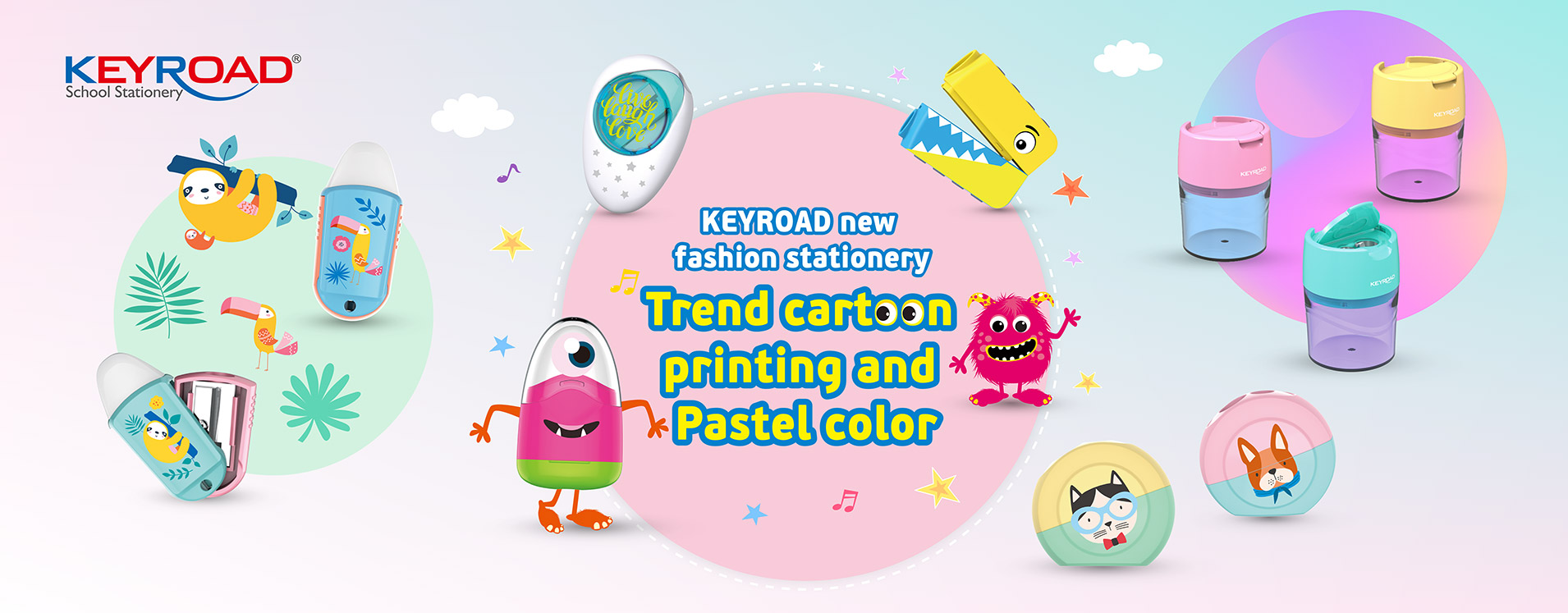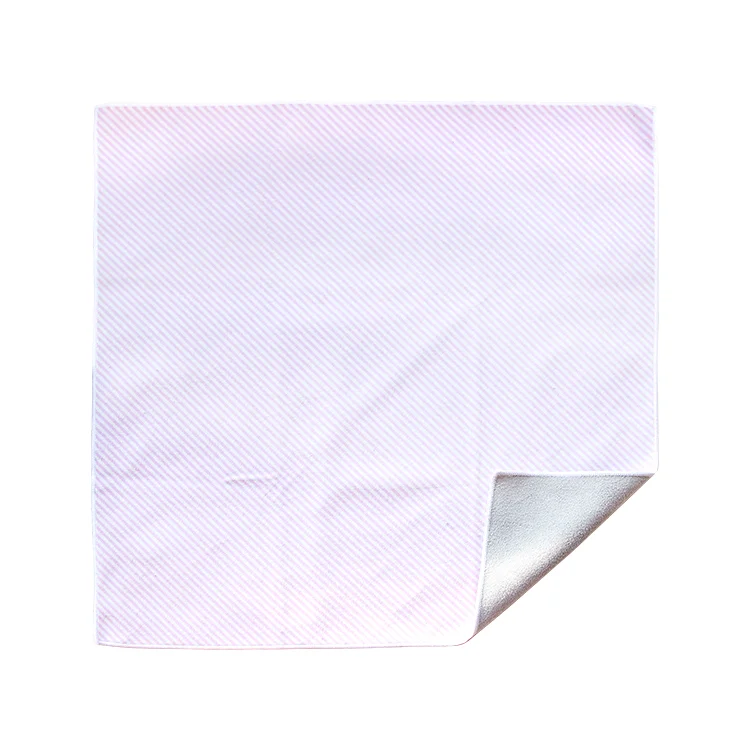In school life, stationery is a child's closest study companion. From colored pencils and erasers to pencil cases and notebooks, a variety of cute and fragrant "scented stationery" are quietly making their way into classrooms and desks. Their vibrant colors and alluring aromas attract children's attention, making them popular items that are eagerly sought after. However, these seemingly harmless items may harbor significant health risks. This article will analyze the potential hazards of scented stationery from multiple perspectives, the chemical principles behind them, and the precautions parents should take when purchasing, to help more families protect their children's safety and health.
1. Why is scented stationery so popular?
"Scented erasers," "fruit-scented pens," "chocolate-scented pencil cases"... Today's children's stationery has transcended traditional functionality to emphasize "fun" and "creativity." Manufacturers are adding scents to make stationery more appealing—children can smell sweet fruity or refreshing floral aromas while using them, which can increase their interest in learning and even make writing and drawing more enjoyable. Young children, in particular, have a more sensitive sense of smell, and they often prefer scented stationery because of the pleasant aroma. Market research data shows that over 40% of lower-grade elementary school students prioritize scented products when purchasing stationery. However, this very "scent marketing" strategy hides overlooked chemical safety risks.
2. Where does the fragrance come from?
The aroma of scented stationery often comes from artificially synthesized flavorings. To simulate the scent of fruit, flowers, or candy, manufacturers often add various chemical fragrances and solvents, such as phthalates, benzene, ethyl acetate, and toluene, during the production process. These chemical components are mostly volatile organic compounds (VOCs), which easily release odor molecules into the air and are inhaled into the human respiratory tract.
If manufacturers use industrial-grade fragrances or low-quality solvents to reduce costs, these ingredients can release harmful substances during evaporation, potentially causing the following effects on children:
Respiratory irritation: VOCs can irritate the respiratory tract, causing symptoms such as coughing, sneezing, and sore throats. Skin Allergies: Some fragrances may cause rashes and itching upon contact with the skin, especially for children with sensitive skin.
Nervous System Effects: Long-term inhalation of high concentrations of artificial fragrances may cause dizziness, decreased concentration, and mood swings.
Endocrine Disruption: Certain fragrances, such as phthalates (commonly used in fragrances), have been shown to have potential endocrine disrupting effects, affecting children's hormone balance.
While these risks may not manifest immediately, long-term exposure over time may have chronic effects on children's health.

3. The "Hidden Risks" of Scented Stationery: Children Are More Susceptible
Children are particularly susceptible to scented stationery for the following reasons:
3.1 Curiosity and Frequent Exposure
Children are naturally interested in novelty and enjoy smelling, touching, and even biting stationery. Products with sweet or fruity scents, in particular, can easily lead children to mistakenly believe they are edible, increasing the risk of accidental ingestion.
3.2 Immature Immune System
Children's immune systems and liver and kidney detoxification capabilities are weaker, making them unable to effectively metabolize harmful chemicals. Even trace exposure can cause more pronounced physiological reactions than in adults.
3.3 Closed and Poorly Ventilated Learning Environments
Children spend the majority of their learning time at their desks in the classroom or at home, environments often with limited air circulation. Chemical gases released by scented stationery can easily accumulate in the air, forming a "hidden source of pollution."
3.4 Long-term Exposure Risks Are Ignored
Scented stationery may not cause immediate discomfort, but the health risks of long-term, low-dose exposure are often overlooked, particularly chronic irritation to the respiratory tract and nervous system.
4. Testing Results of Substandard Scented Stationery Raise Concerns
In recent years, market regulatory authorities in many regions have conducted random inspections of stationery markets near schools, revealing serious problems with some "scented stationery" samples. For example:
Excessive levels of volatile organic compounds, including solvent-based chemicals like toluene and xylene, far exceeding national safety standards;
Phthalates contained in fragrances, internationally recognized as potential endocrine disruptors;
Improper product labeling, lacking information about the manufacturer, fragrance source, or usage warnings;
Some stationery has a strong odor, and prolonged exposure can cause symptoms such as dizziness and nausea. These data indicate that a significant proportion of scented stationery on the market still poses safety risks. Some consumers, lacking the ability to discern, are often attracted by appearance and overlook safety indicators.
5. How can parents identify and prevent these issues?
To protect children's health, parents should pay special attention to the following points when purchasing and using stationery:
5.1 Check Labels and Certifications
Choose reputable brands and products with quality certifications, such as those bearing the national GB 21027 "General Safety Requirements for School Supplies" certification mark. Avoid products without any "three no's."
5.2 Smell
When purchasing, try to choose unscented or subtly scented stationery. If a product has a pungent or strong fragrance, immediately discontinue purchase, as this often indicates a high concentration of artificial fragrance.
5.3 Check the Material
High-quality stationery is typically made of environmentally friendly and safe materials such as ABS, PP, and silicone. If the surface is sticky or noticeably discolored, it may indicate quality issues. 5.4 Pay attention to children's usage habits.
Teach children not to put stationery in their mouths, avoid prolonged exposure to strongly scented erasers or pens, and wash their hands promptly after use.
5.5 Maintain ventilation in the learning environment.
Maintaining good air circulation in the classroom or desk area can help reduce the concentration of volatile compounds in scented stationery.
5.6 Pay attention to unusual reactions.
If a child experiences symptoms such as headaches, coughs, or skin rashes after using certain stationery, they should immediately stop using it and seek medical attention. If necessary, retain samples for testing.
6. Control at the Source: Joint Protection by Companies and Regulators
To protect children from the hazards of scented stationery, in addition to family education, manufacturers and regulatory authorities share an equally important responsibility.
Manufacturers should strictly control the type and concentration of fragrances, use food-grade fragrances that meet children's product standards, and avoid using industrial raw materials.
Regulatory authorities should increase market inspections and penalize companies that violate regulations.
Schools and parents should also jointly conduct "stationery safety education" to raise children's safety awareness.
Promoting environmentally friendly and non-toxic children's stationery is an inevitable trend for the entire industry. The pleasant sensation brought by scented stationery is only a fleeting olfactory stimulation; health and safety are the foundation of a child's learning. When preparing school supplies for their children, parents should prioritize safe stationery brands and eco-friendly materials, and avoid being misled by the potential risks of scented packaging. Let your children learn in fresh air and grow in a safe environment.
As a professional children's stationery supplier, Johnshen consistently adheres to the product philosophy of "safety, environmental protection, and health." We understand that a child's learning environment is closely linked to their healthy development. Therefore, during the product design and production process, we strictly adhere to international children's product safety standards and avoid the use of any irritating fragrances or harmful chemicals. Johnshen is committed to providing families around the world with non-toxic, safe, and environmentally friendly children's stationery solutions, ensuring that every pen and eraser becomes a safe learning companion for children. We believe that truly good stationery lies not in its strong scent, but in its dedication to protecting a child's healthy growth.
www.johnshenstationery.com
johnshenstationery


Average Rating